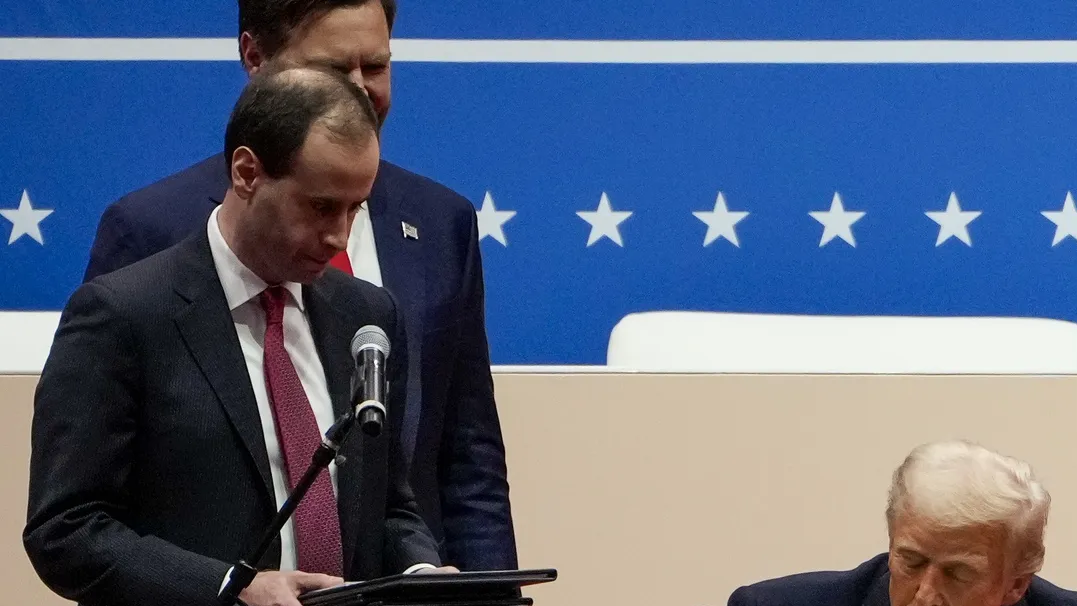
The White House website dropped its Spanish language portion of the site shortly after President Donald Trump took office on Monday, Jan. 21.
The portion of the site also was removed during his last term but was restored under President Joe Biden.
“I think that while we’re in this nation, we should be speaking English,” Trump said on the 2016 campaign trail, noting he thinks that’s how people assimilate in the U.S. and become successful.
Trump won support from about 45% of hispanic voters nationally, helping clinch his overall election win. It was an increase from the 32% of the hispanic vote he drew in 2016 and marked the first time Miami-Dade County in Florida was red since 1988.
But on Tuesday morning in Mississippi, “clima,” the Spanish word for weather, was one of the top trending search terms in the state, implying a significant number of people relied on the term to get updates about snow, ice and extreme cold sweeping the region.
What do Trump changes mean for the Hispanic and Latinx population in the Magnolia State? How many people who live here don’t speak English very well?
How large is the Hispanic population in Mississippi?
As of the 2020 census, there were about 2.9 million people in Mississippi. Of those, about 3.6% were Hispanic or Latinix. Scott County had the highest population at 14%, followed by Issaquena with 9.6% and Jackson County with 7%.
The Urban Institute projected that Hispanic households will be the largest growing demographic in the state though 2040.
How many people in Mississippi don’t speak English?
According to 2022 data from the Migration Policy Institute, there were about 64,867 foreign-born people in Mississippi, and about 2.7 million who were born in the U.S.
The majority of foreign-born residents, 56% speak only English or speak it very well. About 43% of foreign-born people in Mississippi qualified as Limited English Proficient (LEP), meaning they do not speak the language very well.
About 26% of naturalized citizens were LEP, and 55% of noncitizens did not speak the language well.
About 111,000 households in the state speak a language other than English. Out of about 67,500 Spanish-speaking households, about 54% spoke English “very well” and 46% were not fluent.
Diverse and growing:What does the Hispanic population of Mississippi look like?
What are changes Trump wants to make to immigration?
Hours after Trump took office, he signed executive orders that worked to change the immigration system and send military troops to the Mexico border to combat a newly declared emergency.
“All illegal entry will immediately be halted, and we will begin the process of returning millions and millions of criminal aliens back to the places from which they came,” Trump said.
The president falsely claimed that the United States is the only country with birthright citizenship, which makes any child born on American soil a citizen regardless of their parents’ citizenship. He signed an order seeking to eliminate the practice, which is protected by the 14th Amendment to the U.S. Constitution. Eighteen states and the ACLU are challenging the executive order in court.
More:How many H-1B visa workers are in Mississippi? Where do they work? Here’s what we know
How many undocumented migrants live in Mississippi?
An August 2024 report from the Mississippi Office of the State Auditor estimated that 22,000 undocumented migrants are in the state, costing taxpayers more than $100 million per year. The report does not note the countries of origin for most of the undocumented. The financial breakdown includes:
- $25 million for K-12 education.
- $77 million for health care.
- $1.7 million for incarceration.
“Mississippi’s illegal immigration problem is spiraling out of control and is costing taxpayers millions,” said State Auditor Shad White said in a news release. “Our public schools, hospitals, and prisons will continue to lose massive sums of money that we could have spent on our own citizens if this problem is not solved.”
The report estimated that, of the 2022 foreign-born population in the state:
- 41% are foreign-born U.S. citizens.
- 34% were here illegally.
- 24% held legal visas or had permanent legal status or family ties.
- 2% were recent naturalizations.
Contributing: Phillip M. Bailey, Rebecca Morin, Lici Beveridge
Bonnie Bolden is the Deep South Connect reporter for Mississippi with Gannett/USA Today. Email her at [email protected].
